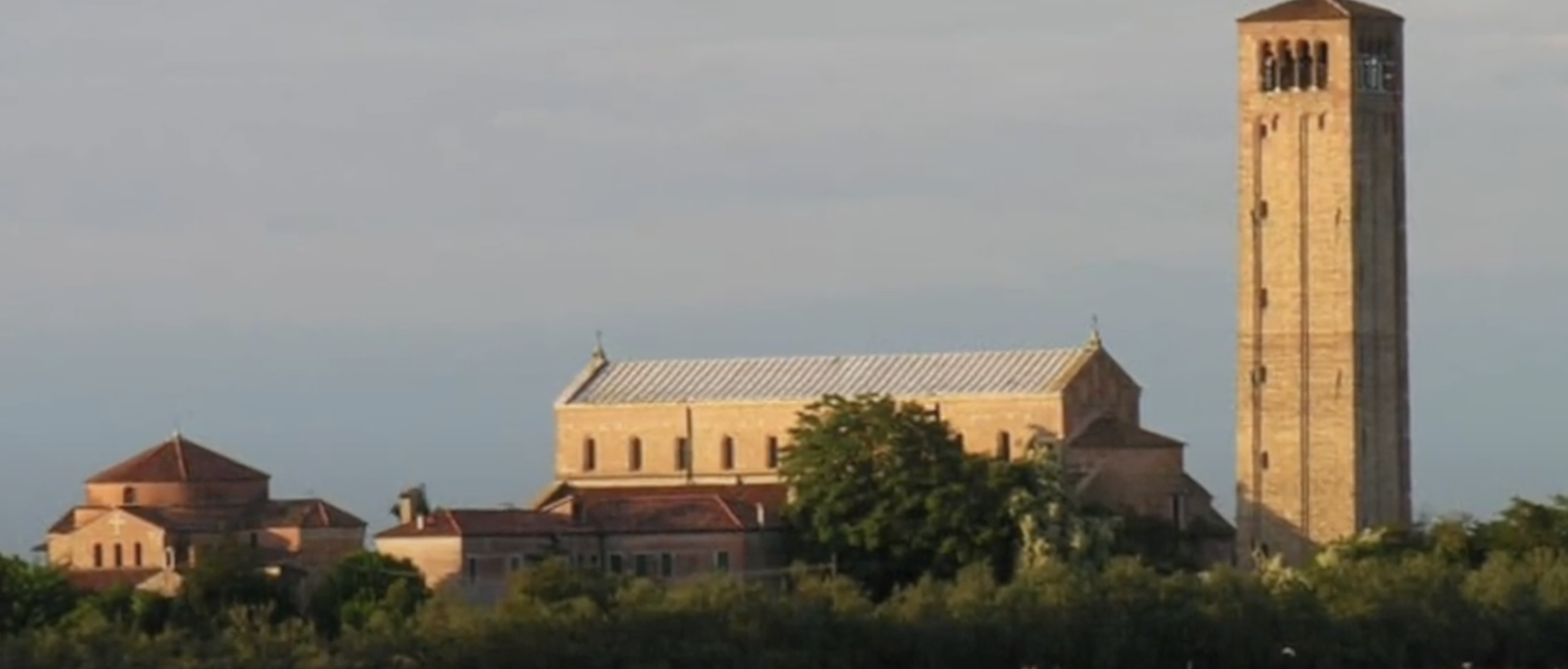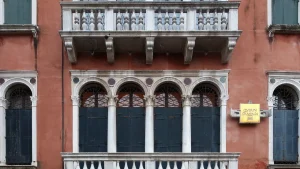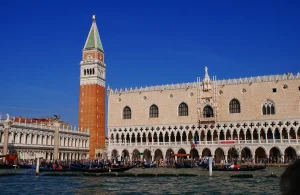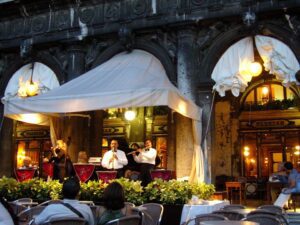Torcello — The Forgotten Cradle of Venice: Mosaics, Legends & Locanda Cipriani
When travelers think of the Venetian Lagoon, they picture Murano’s fiery glass furnaces or the rainbow houses of Burano. Yet just beyond those famous islands lies Torcello — a place where time seems to pause, where mosaics shimmer in candlelight, and where Ernest Hemingway once sipped wine beneath the mulberry trees of Locanda Cipriani.
Today Torcello has fewer than a dozen residents, but in the early Middle Ages it was the beating heart of a growing civilization. Long before Venice rose in marble, Torcello was the first great settlement of the lagoon — a refuge for mainland Romans fleeing the chaos that followed the fall of the Empire. Here they built churches, palaces, and docks; they traded salt and silk; they laid the spiritual and cultural foundations of what would become La Serenissima.
To wander Torcello now is to walk through the ghost of a city — quiet canals overhung by willows, Byzantine domes glinting in sunlight, stone paths bordered by reeds. It’s not merely a day trip; it’s an encounter with the origins of Venice itself.
🏛 The Rise and Fall of a Lagoon Capital
From Refuge to Republic
In the fifth and sixth centuries, northern Italy was a battleground. Goths, Huns, and Lombards swept across the mainland, destroying Roman towns like Altinum. Survivors fled into the marshy lagoon, seeking safety on its islands. Torcello — whose name may come from Turricellum, “little tower” — became one of their earliest sanctuaries.
By the tenth century, this refugee camp had become a flourishing port of perhaps 20,000 people — larger and wealthier than Venice itself. Merchants traded with Byzantium; craftsmen built elegant stone churches; farmers tended orchards and vineyards on the island’s fertile fringes. Salt was Torcello’s white gold, exported across the Adriatic and taxed to finance its growing power.
The Turning Tide
Prosperity could not last. As the lagoon silted up and mosquitoes bred in stagnant water, malaria spread. Trade shifted south to the deeper channels around Rialto, where Venice was rising fast. By the 1300s, Torcello’s palaces were emptying; by the 1600s, the once-great city had dwindled to a handful of priests and farmers. Its stones were ferried away to build Venice — literally absorbed into the empire it helped create.
What remains is hauntingly beautiful: two ancient churches, a scattering of ruins, and an atmosphere so tranquil it feels sacred.
🌅 What to See on Torcello
1. Cathedral of Santa Maria Assunta (Founded 639 AD)
The oldest church in the Venetian Lagoon and a masterpiece of early Byzantine art. Step inside and the dim light reveals mosaics that pre-date those of St. Mark’s Basilica by centuries:
- The Virgin Hodegetria — a solemn Madonna in the apse, her robes shimmering with thousands of golden tesserae.
- The Last Judgment — an immense 12th-century wall of angels, demons, and resurrected souls that rivals Ravenna’s glory. Its detail — serpents coiling through sinners, saints ascending on wings — is breathtaking.
- The Floor Mosaics — a marble carpet of geometric inlays echoing Eastern patterns, proof of Torcello’s trade with Byzantium.
Every surface tells the story of faith meeting empire, of artisans bridging East and West. When the sun slants through narrow windows, the gold tiles seem to move — a miracle of light unchanged since the seventh century.
2. Church of Santa Fosca
Beside the cathedral stands Santa Fosca, a smaller, cross-shaped church ringed by a graceful portico. Built in the 11th century, its dome and arches echo Constantinople’s style. Inside, the simplicity feels monastic, a contrast to the grandeur next door. Many visitors linger here in silence, listening to wind and birdsong drifting through the open doors.
3. Ponte del Diavolo — The Devil’s Bridge
One of the last Venetian bridges without parapets, it leaps in a perfect stone arc over a narrow canal. Legend says the Devil built it in one night to win the soul of a young woman — a story locals still tell as dusk falls and the lagoon turns silver.
4. Museo di Torcello
Housed in the Palazzo dell’Archivio and Palazzo del Consiglio, this small museum preserves fragments of Roman mosaics, Byzantine capitals, and medieval carvings — relics of the vanished city. Among the highlights are floor panels once part of patrician villas and an exquisite marble relief of the Archangel Michael.
5. Attila’s Throne
Outside the cathedral sits a massive stone chair, popularly called “Attila’s Throne.” The Hun never came here; it was likely the magistrate’s seat, but the name endures, feeding Torcello’s aura of myth.
6. The Countryside & Canals
Beyond the monuments lies silence: canals lined with reeds, fig trees overhanging narrow lanes, butterflies flickering above wildflowers. Walking these paths feels like crossing centuries. In spring, the air is thick with jasmine; in autumn, with wood smoke from distant kitchens.
🍷 Locanda Cipriani — Hemingway’s Hideaway
No visit to Torcello is complete without lunch at the legendary Locanda Cipriani. Founded in 1934 by Giuseppe Cipriani — the visionary behind Harry’s Bar — the inn quickly became a magnet for artists, royals, and dreamers seeking refuge from the world.
Ernest Hemingway arrived in 1948, escaping the post-war bustle of Venice. He spent weeks here, hunting duck on nearby marshes by day and writing by night. Locals still recall “Papa Hemingway” sitting under the pergola, notebook in hand, prosecco within reach. He dedicated passages of Across the River and Into the Trees to Torcello, capturing its melancholy charm.
Over the decades, Locanda Cipriani hosted Queen Elizabeth II, Charlie Chaplin, and Princess Diana. Even today, its terrace — shaded by wisteria, facing the campanile of Santa Fosca — remains one of the most romantic dining spots in Italy. The menu celebrates lagoon simplicity: risotto alla busera, grilled sea bass, garden vegetables, and the house tiramisù. Service is discreet, the atmosphere timeless.
🎬 Torcello on Screen and in Art
Hemingway wasn’t the only creative seduced by Torcello’s atmosphere. Its golden light and haunting silence have lured filmmakers, painters, and poets for decades. Sequences of Italian neorealist films were shot along its canals; art photographers come for the morning mist that wraps the bell tower like a veil. The island’s Byzantine mosaics inspired generations of Venetian glass artists — among them Lucio Andrich of Murano, who later settled nearby and transformed local mosaic traditions into modern art pieces still exhibited across Italy.
Andrich’s works, shimmering with gold leaf and color, echo Torcello’s ancient techniques. Walking through the cathedral, you can almost sense that lineage — from anonymous Byzantine masters to modern Venetian visionaries keeping the craft alive.
🕊 Torcello Today — A Place of Silence and Soul
Today, fewer than 15 people call Torcello home, yet the island feels far from empty. It hums softly with life — the splash of an oar, a heron lifting from reeds, church bells drifting across the lagoon. Visitors come for half a day, but many leave feeling they’ve touched eternity.
Unlike the crowded streets of Venice, Torcello offers space to breathe. Its restaurants serve home-grown vegetables and freshly caught fish; its gardens bloom in wild profusion. Even the air feels different — cleaner, lighter, scented with salt and grass.
Each year, the cathedral hosts sacred-music concerts whose harmonies reverberate through stone walls built 1,300 years ago. At dusk, when the last boats depart, Torcello returns to its natural state — quiet, contemplative, wrapped in the glow of history.
🚤 How to Reach Torcello
By Vaporetto
From Venice’s Fondamenta Nove, take Line 12 to Burano, then the short shuttle to Torcello. The whole journey takes about 45 minutes and offers gorgeous lagoon views.
By Private Boat
The most elegant way is a private lagoon tour with Tour Leader Venice. Your captain will pick you up directly from your hotel pier, glide past Murano’s glasshouses and Burano’s rainbow façades, and deliver you straight to Torcello’s quiet landing stage — no crowds, no waiting, just comfort and style.
🌊 A Tour Leader Venice Day Trip to Torcello
We design private experiences that reveal the lagoon’s forgotten corners. Our Lagoon Tours often include Torcello as their crown jewel — the perfect balance of art, history, and peace.
- 🚤 Luxury Boat Transfer – Door-to-door pickup from your Venice accommodation.
- 👩💼 Licensed Guide – Local experts who bring mosaics and legends to life.
- 🎨 Art & Architecture Tour – Byzantine mosaics, Lucio Andrich’s influence, and centuries of craft.
- 🍝 Gourmet Lunch – A reservation at Locanda Cipriani or a family trattoria chosen for authenticity.
- 🕰 Flexible Timing – Combine with Burano, Murano, or a sunset bragozzo sail.
Sample Itinerary — Venice → Torcello → Venice
| 9:00 AM | Private pick-up in Venice and departure across the lagoon. |
| 9:45 AM | Arrival at Torcello; guided walk through fields and canals. |
| 10:00 AM | Visit the Cathedral of Santa Maria Assunta and its mosaics. |
| 11:30 AM | Explore Santa Fosca, Attila’s Throne, and the Devil’s Bridge. |
| 12:30 PM | Lunch at Locanda Cipriani or a selected trattoria. |
| 2:00 PM | Free time for museum visit or a quiet stroll. |
| 3:00 PM | Optional stop in Burano on the return journey. |
| 4:30 PM | Return to Venice; drop-off at hotel pier around 5 PM. |
💎 Insider Tips for Your Visit
- Best Season: April–October. Spring for flowers and soft light; autumn for solitude and golden sunsets.
- What to Wear: Comfortable shoes — paths are unpaved. Bring a hat and camera.
- Timing: Arrive early morning or late afternoon for the cathedral’s mosaics glowing in angled light.
- Combine Wisely: Add nearby Murano and Burano for a full day of color and craft.
- Reservations: Book Locanda Cipriani well in advance — tables fill quickly, especially on weekends.
🕯 Why Torcello Still Matters
Torcello is not a museum; it’s a mirror. Its ruins reflect what Venice once was — fragile yet eternal, worldly yet devout. Standing before the mosaic of the Last Judgment, you sense the humility that built a maritime empire. Outside, in the garden of Locanda Cipriani, prosecco in hand, you feel the same peace that kept Hemingway writing long after midnight.
Here the past is not distant; it breathes in every stone and shimmer of water. Visit with open eyes and you’ll understand why locals call Torcello “l’anima della laguna” — the soul of the lagoon.
🌺 Final Thoughts — The Cradle of Venice
To visit Torcello is to journey backward through time: from modern Venice’s bustle to the whisper of its beginnings. The mosaics of Santa Maria Assunta gleam like captured sunlight; the canal paths hum with cicadas; the scent of rosemary drifts from Locanda Cipriani’s garden. Few places in the world combine art, legend, and serenity with such grace.
When you’re ready to experience Venice beyond gondolas and galleries — to touch the quiet source of its power — follow the wake toward Torcello. It’s where the Republic was born, where Hemingway found solitude, and where the lagoon still dreams.
❓ FAQs — Torcello, the Cradle of Venice
Is Torcello worth visiting?
Absolutely. Torcello is the oldest inhabited island in the Venetian Lagoon — a serene, open-air museum of mosaics, legends, and silence. Visiting feels like traveling back to the dawn of Venice itself. You can explore the Cathedral of Santa Maria Assunta, the Devil’s Bridge, and Hemingway’s favorite Locanda Cipriani as part of our Unforgettable 6-Hour Island Hopping Excursion — Discover Murano, Torcello, Burano & More, with private boat and licensed guide.
How long do you need to visit Torcello?
Yes — Tour Leader Venice curates tailor-made itineraries linking Torcello’s sacred art with modern Venetian craftsmanship and romance. You might follow the lagoon’s artistic thread with a Venetian Letterpress Printing Workshop, or end your day in style aboard a Riva Experience gliding past the golden light of the lagoon. Each combination reveals another layer of Venice’s timeless beauty.
Can I combine Torcello with other artistic or romantic experiences?
Yes — Tour Leader Venice curates tailor-made itineraries linking Torcello’s sacred art with modern Venetian craftsmanship and romance. You might follow the lagoon’s artistic thread with a Venetian Letterpress Printing Workshop, or end your day in style aboard a Riva Experience gliding past the golden light of the lagoon. Each combination reveals another layer of Venice’s timeless beauty.







